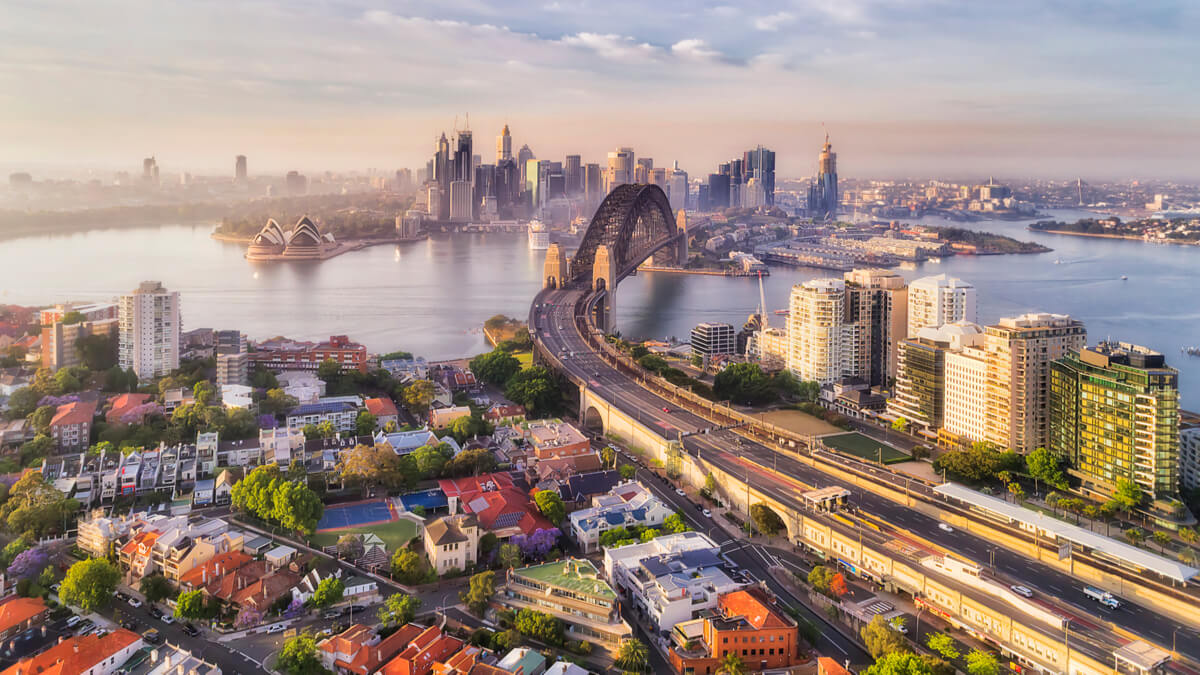Buying property in Australia as non-resident. What you need to know
Whether you’re considering moving to Australia and hope to buy a home or are interested in investing in the Australian property market while remaining...

If you’re already in Australia, perhaps taking a working holiday or gap year, and have fallen in love with the country, you may be considering staying on to study. You have a choice of great places to further your education, with 43 universities throughout the country, including several which frequently feature in lists of the top universities in the world.
However, if you’re not an Australian citizen, the chances are that you’ll need a student visa before you can attend an Australian university or college. Getting this sorted is a priority for anyone intending to study in Australia, and you’ll need to learn about the application process, eligibility requirements, fees and conditions of a study permit before you apply for a university place.
This handy guide covers all the basics about the Australian student visa application process, to get you started.
Each country has a different process for visas, with different visa types available depending on each individual’s personal circumstances. Australia is no different, with many different types of visas issued under several broad categories.
The main categories of visas available are as follows - with some common visa options listed out as examples:
Visitor visas - including visas for people on holiday, taking a working holiday, or transiting through Australia
Study and training visas - student visas, and visa types for people in vocational training
Family and partner visas - spousal and marriage visas, visas for adoption and dependant relatives
Working and skilled visas - for investors, business owners, specialists and graduates
Refugee and humanitarian visas - includes temporary safe haven visas
Other visas - retirement visas, medical care visas, and visas issued to maritime and aviation crews for example
In this article we will explore the visas available to people looking to study in Australia only.
The most commonly issued student visa for Australia is the Subclass 500 Student Visa.
The Australian government doesn’t list your nationality or citizenship as a deciding factor in whether or not you’re eligible for this visa. Instead, there are a series of eligibility requirements you must fulfil, including being proficient in the English language, having the money to pay for your costs while you study, and being willing to acknowledge the Australian Values Statement, and live by Australian law while in the country. More on these requirements in a moment.
Visa eligibility requirements are complex. That means that no matter which visa you want to apply for, it’s worth checking the details thoroughly before you apply. The Australian Home Affairs website sets out all the conditions you need to know about, and also offers guidance on which visa is appropriate for your situation. Here’s a quick overview of the main eligibility requirements for student visas.
Eligibility requirement for Subclass 500 Student Visa:
In addition, you must repay any debt you owe to the Australian government before this visa will be issued, and you may not be eligible to apply if you currently hold certain visa types, or have previously had a visa application turned down.
The other visa type which may be useful to people looking to study in Australia is the Subclass 407 Training Visa, used for professional development and vocational study. Many of the visa conditions are similar to the student visa - you will need to prove you are of good health and character, you have health insurance and adequate funds for your stay, and can speak English, for example. However, in addition to these general requirements, you’ll need to prove the following:
You will need to apply for your student visa at least 6 weeks before you intend to start studying. You can apply online, from Australia or from another country. The steps you’ll need to take are as follows:
When applying for a study permit, the most time consuming part is likely to be gathering the documents needed. You’ll need to check exactly what is required based on your personal situation - here’s an outline of the documents commonly asked for:
If you’re in Australian as a student, visa conditions allow you to work up to 40 hours in every 2 week period while you study.
The upfront application costs for a student or training visa are as follows:
In addition to the application fees, it’s important to remember that there will be other costs associated with getting your visa arranged. For example, you’ll have to pay extra for the health checks and biometric data you need to submit. Documents may need to be translated, which costs extra, and you may need to pay to get police certificates, copies of English proficiency exam documents and so on.
Although you will be able to take some paid employment while you study in Australia, you’ll need to be able to prove you can pay for your university fees and living costs before you can get a visa. That means you will need to have savings, or an income sourced from your home country, rather than relying on work in Australia to cover your university costs.
If you’re paying for your time in Australia using savings you hold in another country, you’ll need to transfer your money to an Australian bank account, or make international bank transfers to cover your costs. This can end up being costly, as traditional banks typically charge high fees for international payments. You may also find that the exchange rate offered is not the best available.
A smart way to access your money when you’re studying abroad, is to use currency specialist Wise. With Wise you can make international transfers from your home bank account to accounts in Australia, for a low upfront fee, and using the mid-market exchange rate. This is the exchange rate you’ll find on google, but it’s not usually offered by banks or currency exchange services. Instead, they add a markup onto the rate used, and keep the difference themselves.
Getting the real exchange rate for your international payment makes a huge impact - a transfer with Wise can work out to be up to 8x cheaper than making the same payment with your normal bank.
You could save yourself even more time and money if you open a Wise borderless account, to manage your money while you travel. This account lets customers hold their money in over 40 different currencies, and switch between them using an app, for just a small fee. All currency conversions are done using the real exchange rate, which means you know you’re getting a good deal.
Going to university opens up opportunity for anyone - but it can be an expensive choice, too. If you’re studying abroad, getting your student visa can be costly - and of course, you’ll have university fees and living costs to consider. Finding a cost effective way to access your money while you’re abroad is essential - otherwise you could be spending more than you need to on bank fees and costs.
Try Wise, for low cost international transfers, no matter where in the world you’re coming from, and you could have more in your pocket to enjoy your time in Australia.
All sources accurate as of 20 January 2019.
*Please see terms of use and product availability for your region or visit Wise fees and pricing for the most up to date pricing and fee information.
This publication is provided for general information purposes and does not constitute legal, tax or other professional advice from Wise Payments Limited or its subsidiaries and its affiliates, and it is not intended as a substitute for obtaining advice from a financial advisor or any other professional.
We make no representations, warranties or guarantees, whether expressed or implied, that the content in the publication is accurate, complete or up to date.

Whether you’re considering moving to Australia and hope to buy a home or are interested in investing in the Australian property market while remaining...

Selling a property in Australia can be a complex process whether it's the first property or the tenth. Now imagine this process in a completely different...

Australia is a popular destination for many foreigners from around the world to move too. In particular, it is a popular place for citizens of France to move...

If you’re a Japanese expat looking to move to the Sydney area, you may be interested in looking for a Japanese school for your children. You may be keen for...

Many Australians look to emigrate at some point in their lives, and one of the most popular locations chosen is Hong Kong. With over 100,000 Australians...

Many Australians move to Singapore every year - in fact, as many as 20,000 Australian expats live in Singapore.¹ If you’re thinking of relocating to Singapore...